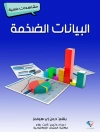Agriculture has experienced a dramatic change during the past decades. The change has been structural and technological. Structural changes can be seen in the size of current farms; not long ago, agricultural production was organized around small farms, whereas nowadays the agricultural landscape is dominated by large farms. Large farms have better means of applying new technologies, and therefore technological advances have been a driving force in changing the farming structure. New technologies continue to emerge, and their mastery and use in requires that farmers gather more information and make more complex technological choices. In particular, the advent of the Internet has opened vast opportunities for communication and business opportunities within the agricultural com- nity. But at the same time, it has created another class of complex issues that need to be addressed sooner rather than later. Farmers and agricultural researchers are faced with an overwhelming amount of information they need to analyze and synthesize to successfully manage all the facets of agricultural production. This daunting challenge requires new and complex approaches to farm management. A new type of agricultural management system requires active cooperation among multidisciplinary and multi-institutional teams and ref- ing of existing and creation of new analytical theories with potential use in agriculture. Therefore, new management agricultural systems must combine the newest achievements in many scientific domains such as agronomy, economics, mathematics, and computer science, to name a few.
Зміст
The Model Driven Architecture Model Driven Architecture MDA Approach: A Framework for Developing Complex Agricultural Systems.- A New Methodology to Automate the Transformation of GISGIS Models in an Iterative iterative Development Process.- Application of a Model Transformation Transformation Paradigm in Agriculture: A Simple Environmental environmental System Case Study.- Constraints Modeling in Agricultural Databases.- Design of a Model model -Driven Web Decision Support System decision support system in Agriculture agriculture : From Scientific Models to the Final Software.- How2Qn D: Design and Construction of a Game-Style, Environmental Simulation Engine and Interface Using UML, XML, and Java.- The Use of UML as a Tool for the Formalisation of Standards and the Design of Ontologies in Agriculture.- Modeling External Information Needs of Food Business Networks.- Enterprise Business Modelling Languages Applied to Farm Enterprise: A Case Study for IDEF0, GRAI Grid, and AMS Languages.- A UML-Based Plug&Play Version of Roth C.- Ontology-Based Simulation Applied to Soil, Water, and Nutrient Management.- Precision Farming, Myth or Reality: Selected Case Studies from Mississippi Cotton Fields.- Rural Development Through Input–Output Modeling.- Modeling in Nutrient Sensing for Agricultural and Environmental Applications.- Estimation of Land Surface Parameters Through Modeling Inversion of Earth Observation Optical Data.- A Stochastic Dynamic Programming Model for Valuing a Eucalyptus Investment.- Modelling Water Flow water flow and Solute Transport in Heterogeneous Unsaturated Porous Media.- Genome Analysis of Species of Agricultural Interest.- Modeling and Solving Real-Life Global Optimization Problems with Meta-heuristic Methods.- Modeling and Device Development for Chlorophyll Estimation in Vegetation.- Clustering and Classification Algorithms in Food and Agricultural Applications: A Survey.- Mathematical Modelling of Modified Atmosphere Package: An Engineering Approach to Design Packaging Systems for Fresh-Cut Produce.












